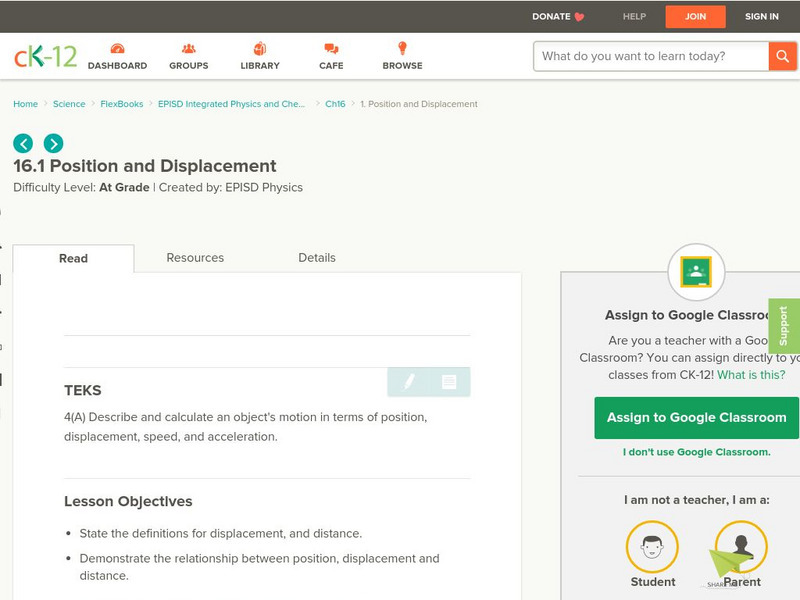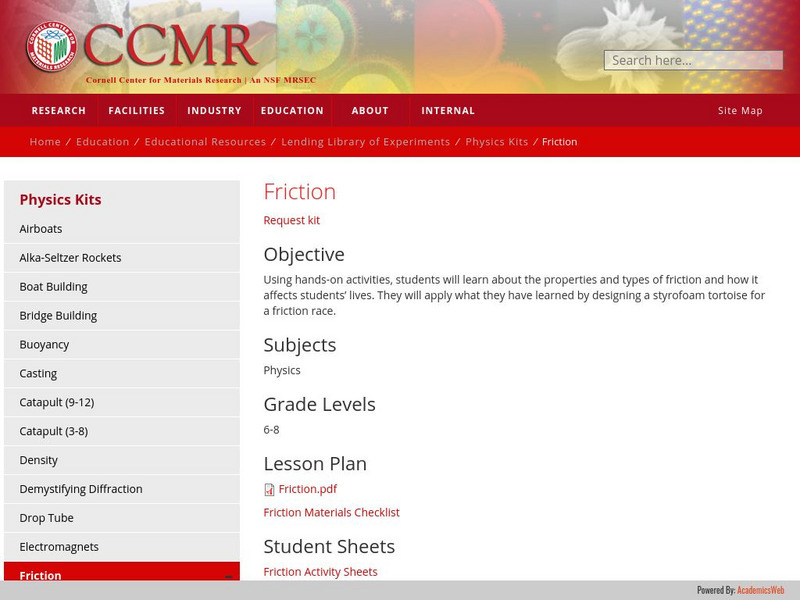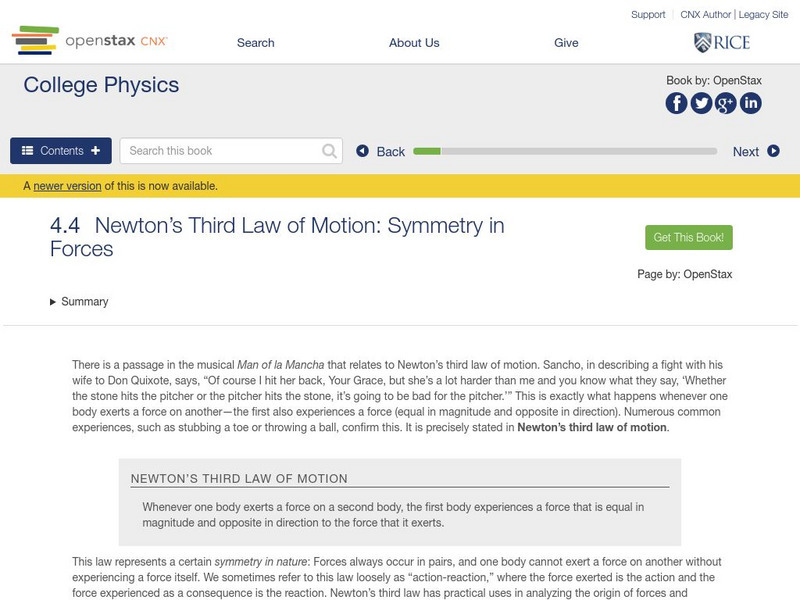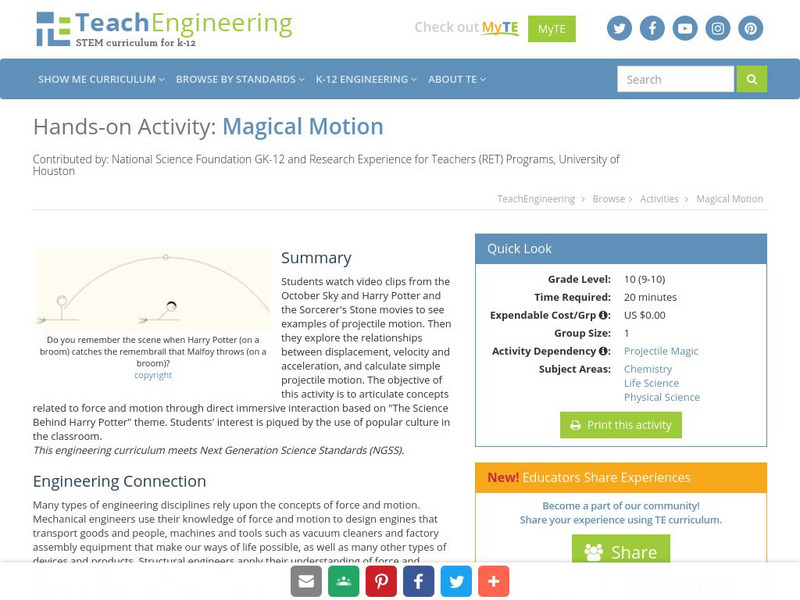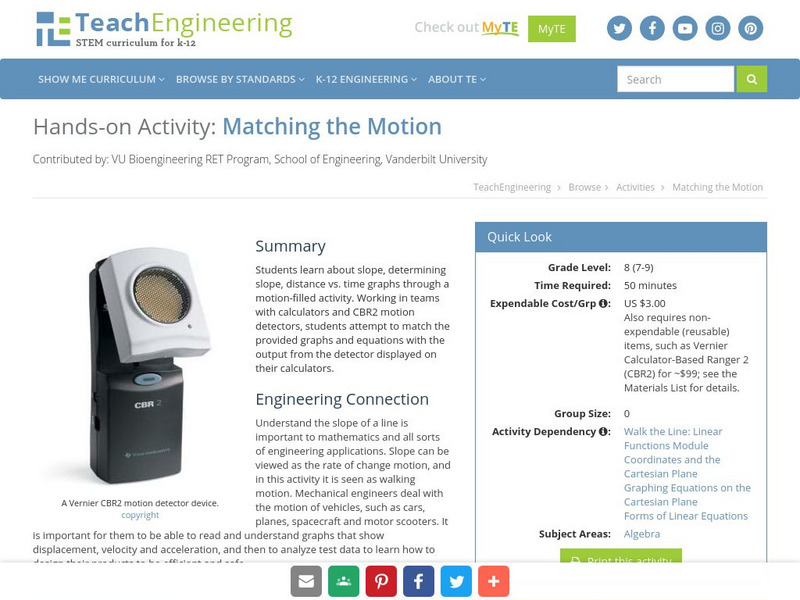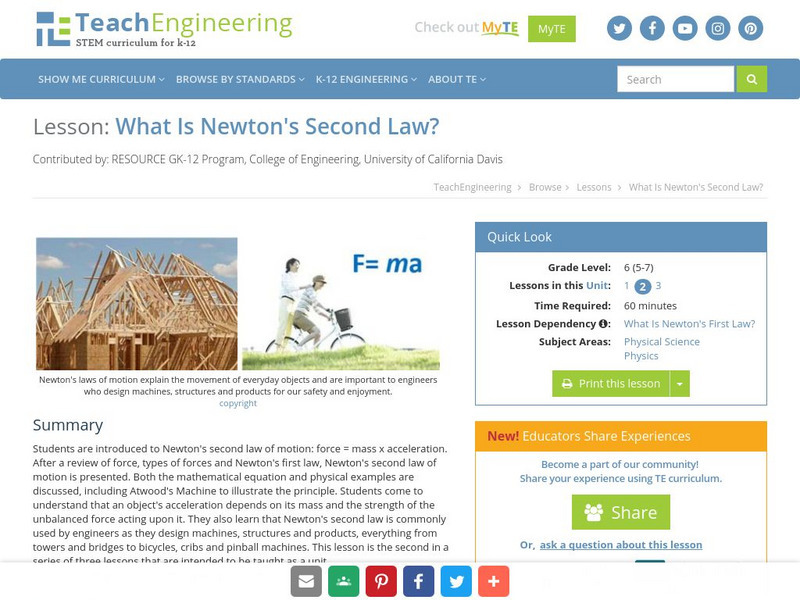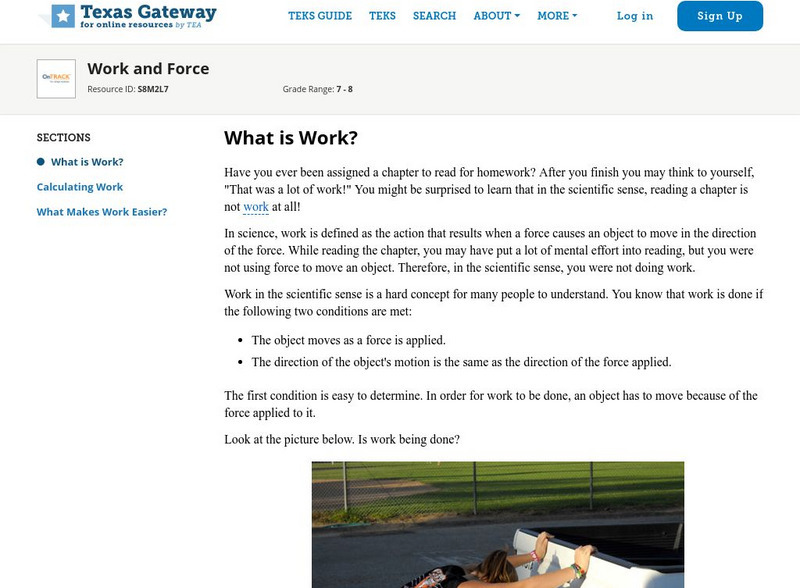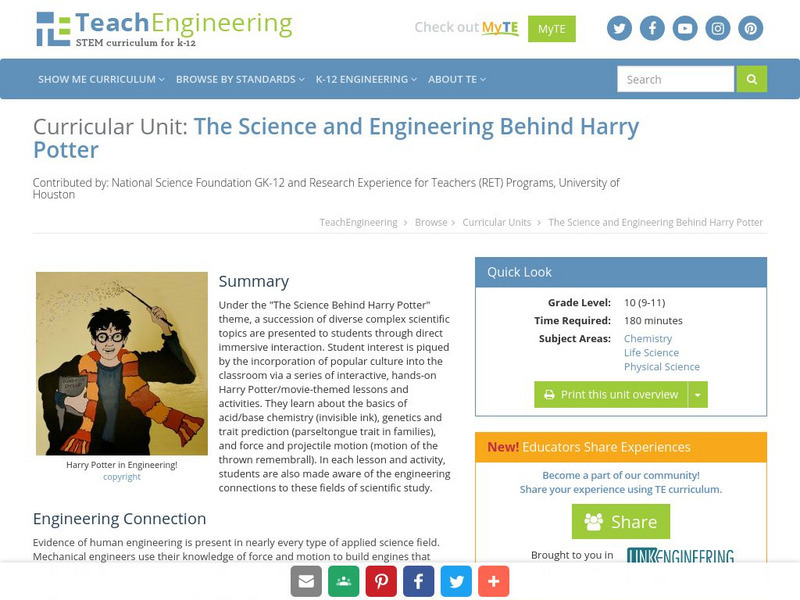Other
Stanford Research Institute: Robotics Demonstrations
Robotics demonstration videos from Stanford Research Institute.
CK-12 Foundation
Ck 12: Episd: Uniform Acceleration
[Free Registration/Login may be required to access all resource tools.] Apply mathematic equations for acceleration to understand motion.
CK-12 Foundation
Ck 12: Position and Displacement
[Free Registration/Login may be required to access all resource tools.] Students explore and calculate an object's motion in terms of position, displacement, speed, and acceleration.
University of Colorado
University of Colorado: Ph Et Interactive Simulations: Forces and Motion: Basics
Explore the forces at work when pulling against a cart, and pushing a refrigerator, crate, or person. Create an applied force and see how it makes objects move. Change friction and see how it affects the motion of objects.
University of Colorado
University of Colorado: Ph Et Interactive Simulations: Gravity Force Lab
Manipulate the mass and distance of two objects to see how these properties change the gravity force.
Georgia Department of Education
Ga Virtual Learning: Ap Physics 1: One Dimensional Kinematics
Using only two of our fundamental units, time and displacement students will build a framework to predict the motion of objects, starting with one dimensional motion.
Khan Academy
Khan Academy: What Is Displacement?
Learn the definitions of position, displacement, distance, and distance traveled and view examples of each.
Cornell University
Cornell University: Cornell Center for Materials Research: Friction
A collection of experiments where young scholars can learn about how friction works and affects the physical world. At the end, students design a tortoise to win by slowing it down using friction. Lesson includes explanation of the...
OpenStax
Open Stax: Newton's Third Law of Motion: Symmetry in Forces
In the following interactive students will begin to understand Newton's third law of motion and also apply it to define systems and solve problems of motion.
TeachEngineering
Teach Engineering: Beating the Motion Sensor
Lighting is responsible for nearly one-third of the electricity use in buildings. One of the best ways to conserve energy is to make sure the lights are turned off when no one is in a room. This process can be automated using motion...
TeachEngineering
Teach Engineering: Sliding Textbooks
In this culminating activity of the unit which highlights how forces play a role in engineering design and material choices, students explore and apply their knowledge of forces, friction, acceleration, and gravity in a two-part experiment.
TeachEngineering
Teach Engineering: Magical Motion
Students watch video clips from the October Sky and Harry Potter and the Sorcerer's Stone movies to see examples of projectile motion. Then they explore the relationships between displacement, velocity and acceleration, and calculate...
TeachEngineering
Teach Engineering: Flying With Style
As students begin to understand the physics behind thrust, drag, and gravity and how these relate these to Newton's three laws of motion, groups assemble and launch the rockets that they designed in the associated lesson.
TeachEngineering
Teach Engineering: Matching the Motion
Students learn about slope, determining slope, distance vs. time graphs through a motion-filled activity. Working in teams with calculators and CBL motion detectors, students attempt to match the provided graphs and equations with the...
TeachEngineering
Teach Engineering: Mechanics Mania
Through ten lessons and numerous activities, students explore the natural universal rules engineers and physicists use to understand how things move and stay still. Together, these rules are called "mechanics." The study of mechanics is...
TeachEngineering
Teach Engineering: What Is Newton's Second Law?
After a review of force, types of forces, and Newton's first law, students are introduced to Newton's second law of motion: force = mass x acceleration.
TeachEngineering
Teach Engineering: What Is Newton's Third Law?
Students are introduced to Newton's third law of motion, and then learn that engineers apply Newton's third law and an understanding of reaction forces when designing a wide range of creations, from rockets and aircraft to door knobs,...
TeachEngineering
Teach Engineering: Projectile Magic
Learners watch video clips from October Sky and Harry Potter and the Sorcerer's Stone to learn about projectile motion. They explore the relationships between displacement, velocity and acceleration and calculate simple projectile...
Texas Education Agency
Texas Gateway: Newton's First Law
Within this resource, you will learn more about Newton's first law and real-world applications of this law.
Texas Education Agency
Texas Gateway: Introduction to Motion
What do you think of when you hear the word motion? Are you moving right now? You may not think so, but you are. Remember, the Earth is moving around the Sun, and the Sun is moving around the Milky Way Galaxy. Everything in the universe...
Texas Education Agency
Texas Gateway: What Is Work?
Have you ever been assigned a chapter to read for homework? After you finish you may think to yourself, "That was a lot of work!" You might be surprised to learn that in the scientific sense, reading a chapter is not work at all!In...
Library of Congress
Loc: See, Hear, and Sing Animation
The Library of Congress takes a look at the wacky world of cartoons, beginning with George Melies, who demonstrated that objects could be animated in film with a series of drawings, each drawn with slight changes.
TeachEngineering
Teach Engineering: Engineering Out of Harry Situations
Under the "The Science Behind Harry Potter" theme, a succession of diverse complex scientific topics are presented to students through direct immersive interaction. Student interest is piqued by the incorporation of popular culture into...
Georgia State University
Georgia State University: Hyper Physics: Kinetic Energy
This site from Georgia State University Physics Department defines kinetic energy and compares and contrasts it with other forms of energy. Provides an equation and links to further, more-detailed information.




